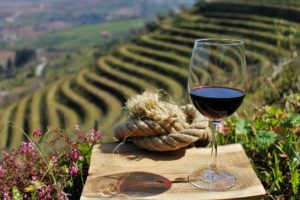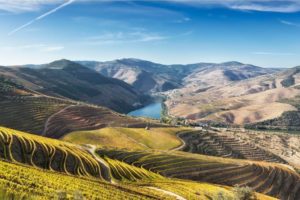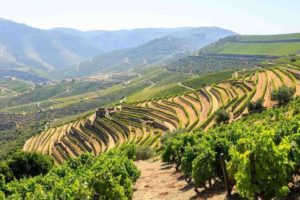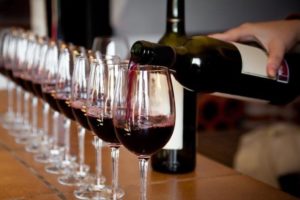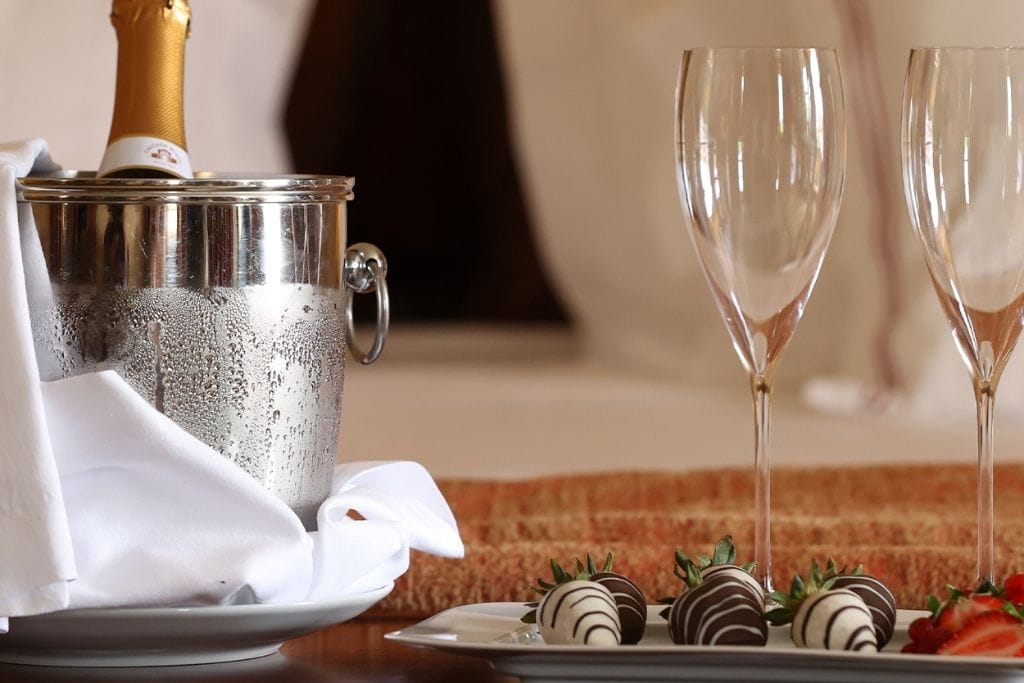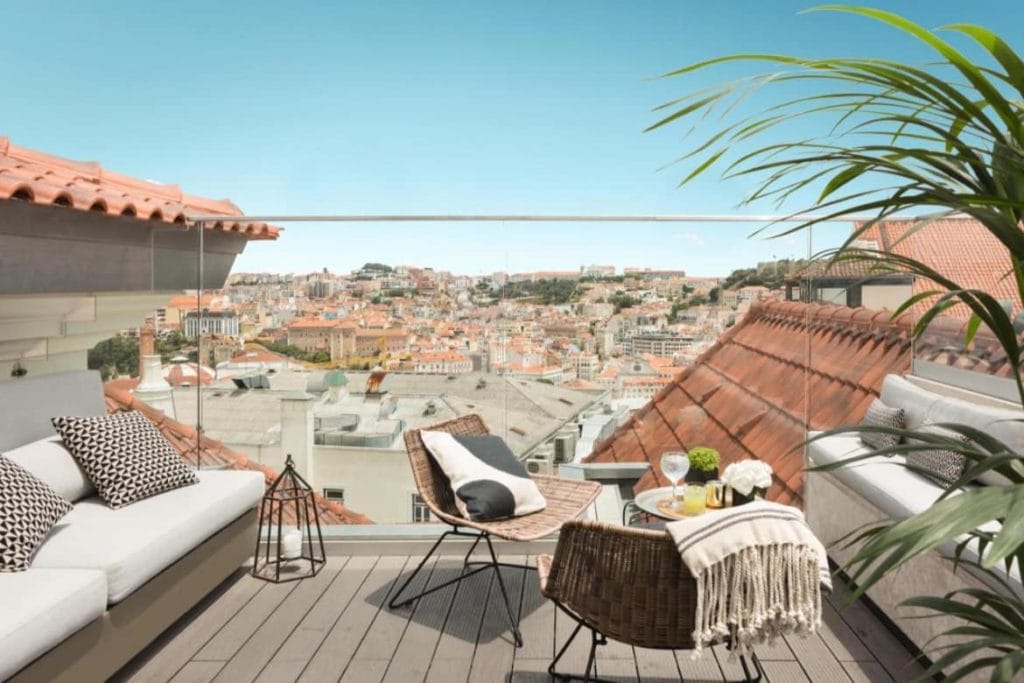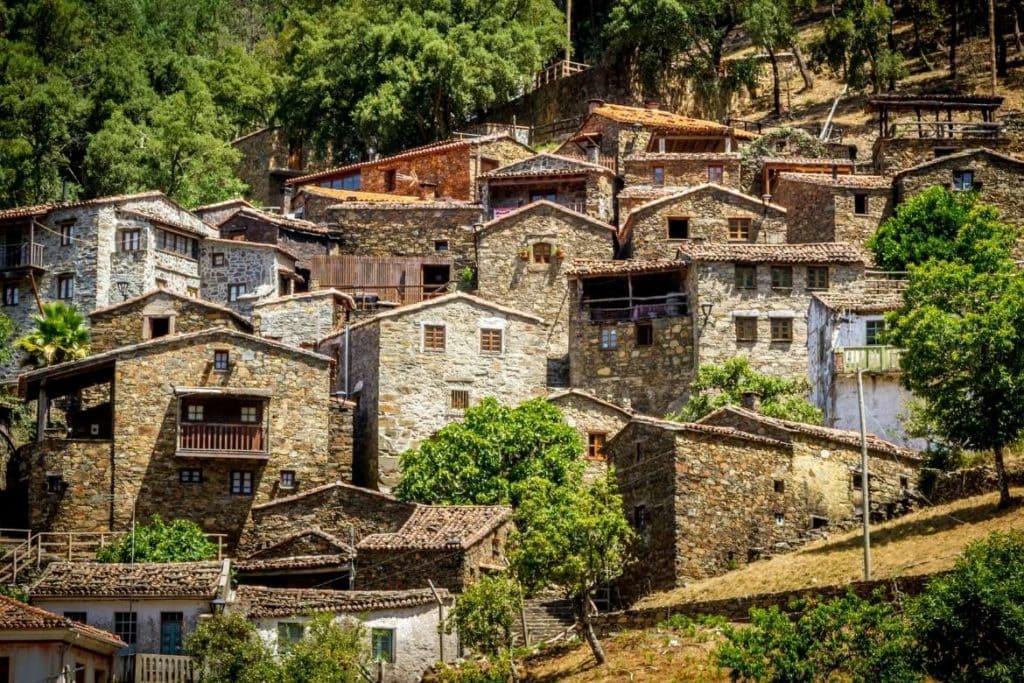A journey through the Douro Wine Region, the world’s first demarcated wine region
The Douro Valley is one of the most appreciated wine regions in the world. The Douro Vinhateiro, as it is known, was the first demarcated wine region in the world (1756) and is considered a World Heritage Site by Unesco. It is home to beautiful natural landscapes and viewpoints. The Quintas (wineries) are located on rural properties and offer several experiences, such as spas, farm-to-table activities, balloon rides, and excellent restaurants.
Those who stay in Porto usually make a round trip to the Douro wine region. However, with so much to see and do, we recommend at least 3 days in the area. If you have the opportunity, stay in one of the beautiful wine hotels in the Douro.
How to plan a trip to THE DOURO VALLEY
Essential Information
General
Information
The world’s first demarcated wine region.
Language: Portuguese.
Distances: Porto (120 km).
Curiosity: The predominant stone in the region is schist, a strongly laminated rock responsible for soil with many nutrients, providing a perfect terroir for wine production.
Transportation
How to get there
Porto, with its international airport Francisco Sá Carneiro in (OPO), is the main gateway to the Douro Valley. There are many day trips and full-day tours that can be taken from there. To explore the region, we recommend renting a car which can be done at the airport. You can also visit the Douro region by train or boat (with main stations at Pinhão and Peso da Régua).
In the region
Getting around
Although the distances are relatively short, the Quintas can be found in large, rural areas. Therefore, the best way to get around the Douro is by car, it will give you the freedom to make several stops throughout the day without any rush. Not to mention that a trip along the scenic N222 is already a great program. The road, which connects Peso da Régua to Pinhão, is considered one of the most beautiful in the world. There is no public transportation to the Quintas, so you can opt for tours with transfers if you don’t drive.
Agenda
Best time to go
The most popular time for tourists is the grape harvest, which takes place in September (it can start earlier, in August, or extend until October, depending on the year and weather conditions). But it is worth pointing out that this is a more expensive period and the cities are more crowded. In September, the Wine & Music Valley takes place, a festival that blends gastronomy, music, and wine culture. The spring, especially April, is a great time because the weather is mild, the vineyards bloom, and the region is not crowded.
The Douro Valley Map
wine areas and regions
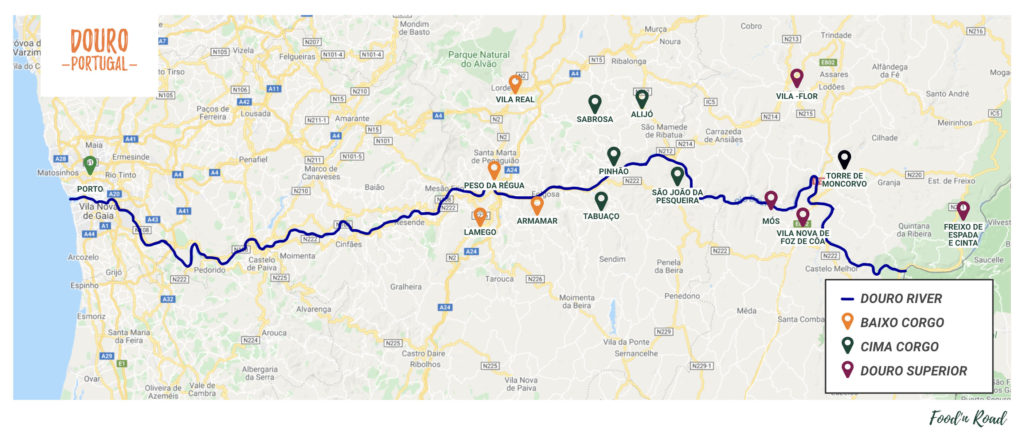
The Douro region is divided into three sub-regions: Baixo Corgo, Cima Corgo, and Douro Superior.
Baixo Corgo
The main cities are Peso da Régua, Lamego, and Vila Real. With good restaurants, Régua is only 1h30 away from Porto.
Cima Corgo
Pinhão is the best-known city in this sub-region, both for being the departure point for cruises and close to renowned port wineries, such as Quinta do Bomfim and Quinta de La Rosa. Nearby are wine-growing villages like Tabuaço or Provesende.
Douro Superior
The main town is Vila Nova de Foz Côa, home to the world’s largest open-air museum, the Archaeological Park of the Côa Valley.
Places to visit
Things to do in the Douro
1. VISIT THE WINERIES
It is impossible to talk about the Douro without mentioning the vineyards, known as Quintas. Besides tasting various labels, it is possible to stay and explore various activities related to the world of wine – from wine-based treatments in spas to balloon flights, picnics in the vineyards, and much more. The most widely grown grape varieties in the region are the red Touriga Nacional, Touriga Franca, Tinta Barroca, Tinto Cão, and Tinta Roriz, and the white Malvasia Fina, Gouveio, Viosinho, Códega, and Malvasia Rei.
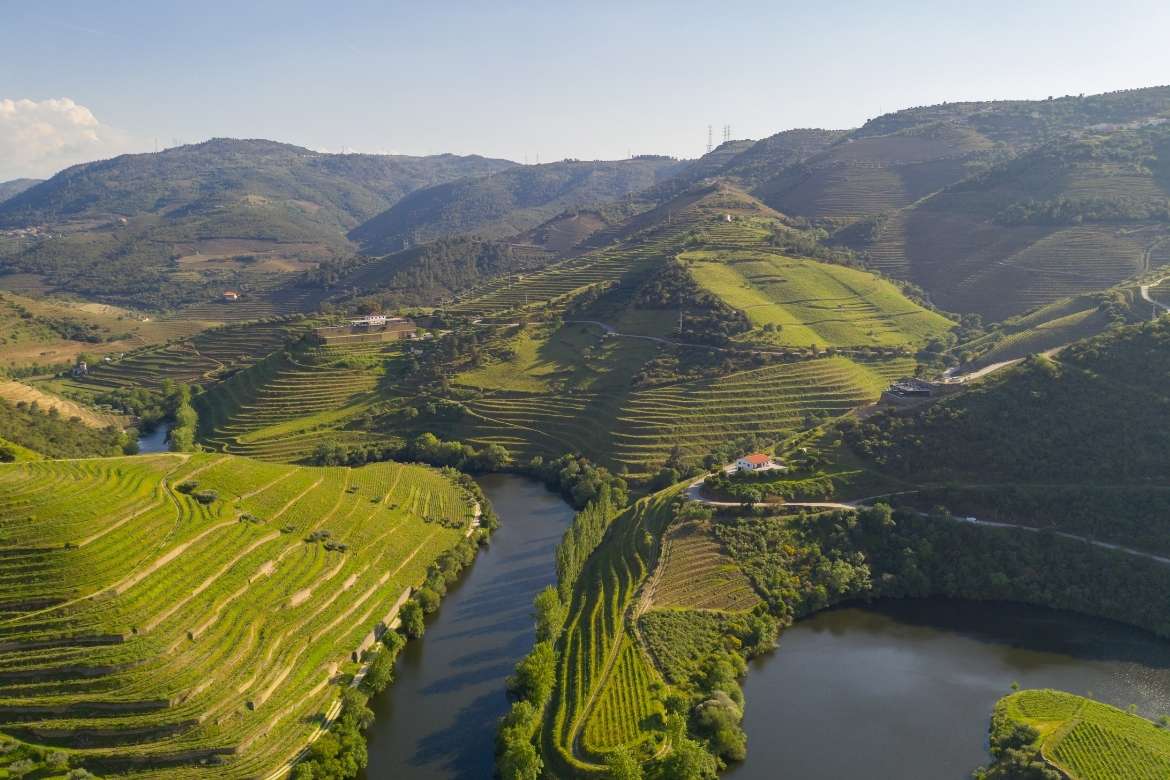
Best wineries to visit in the Douro
Quinta da Pacheca
It is known for its exceptional wine quality and unique experiences. It also has a hotel where guests can sleep in suites that look like wine barrels. There are also balloon rides, picnics in the vineyards, cooking classes, grape treading with tasting (strongly recommended!), among other activities.
Quinta do Bomfim
It is located in Pinhão, Alto Douro, and is one of the most emblematic wineries in the region. It is easily accessible, located within walking distance from the train station. It produces one of the most famous Port wines, Dow’s.

Quinta do Vallado
From 1716, it is one of the oldest and mandatory stops. There is a hotel inside the winery and daily tours with tasting.
Quinta do Crasto
Its wine production dates back to 1615, and there is a centennial house with the possibility of accommodation. The activities range from wine tasting tours to personalized tours that may include lunch or dinner complemented by boat trips on the Douro River.
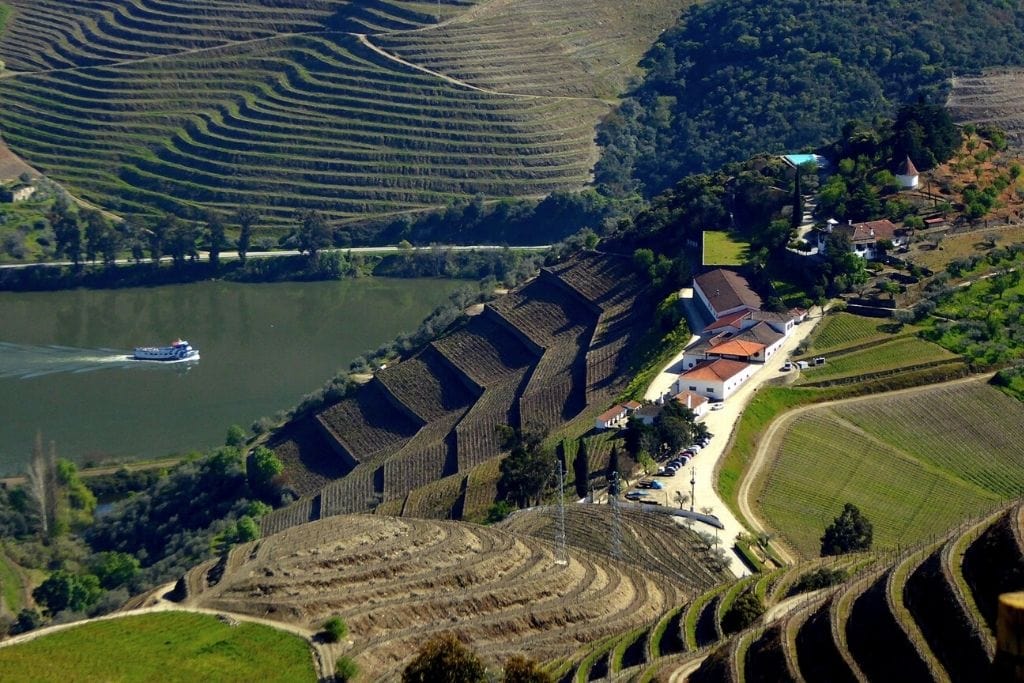
Quinta do Seixo
Located on the south bank of the Douro River, in Cima-Corgo, Quinta do Seixo draws attention for its panoramic view. It has a large area and is one of the most traditional wine producers in the region.
Quinta de La Rosa
It is easily accessible due to its proximity to Pinhão. The winery has a hotel and activities for non-guests such as wine tasting, grape treading during the harvest season, trails, and a restaurant. Besides the wine labels, it also produces beer.
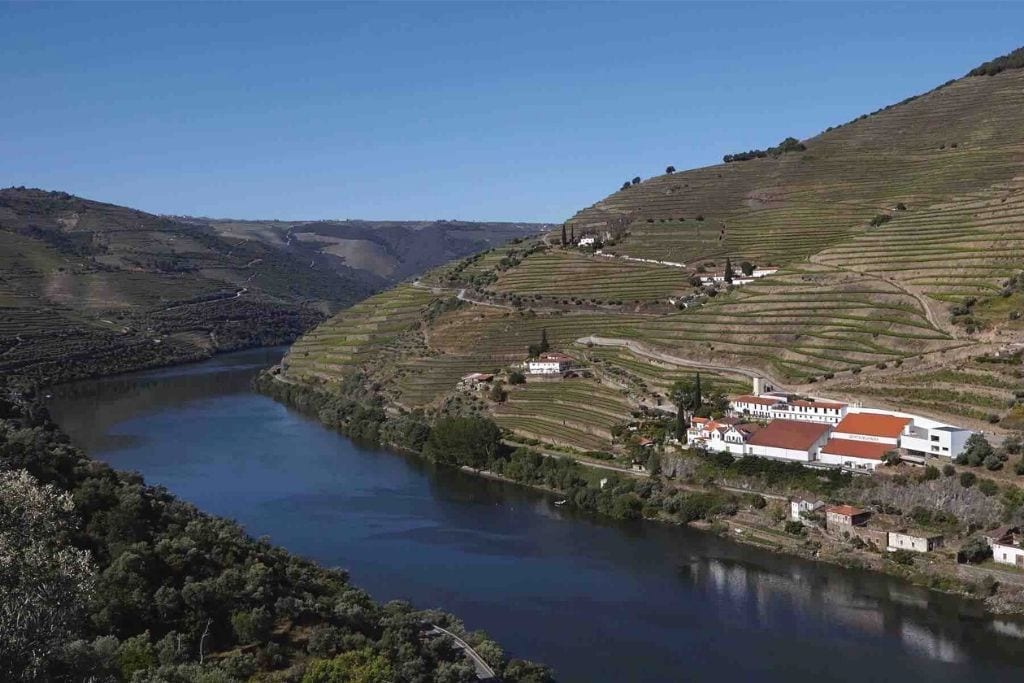

Itinerary Ideas
2. BE AMAZED AT THE VIEWPOINTS
During a trip through the Douro, a must-do program is to get amazed at the viewpoints (known as miradouros) with magnificent landscapes. Get to know the International Douro Natural Park, reaching Barca de Alva, where the river continues to Miranda do Douro at the border between Portugal and Spain. The environmental protection area is home to several species of endangered birds. The region’s climate registers wide thermal amplitude, with cold winters and very hot and dry summers. In February and March, the almond trees in bloom are another spectacle of nature.
Douro Valley Best Viewpoints
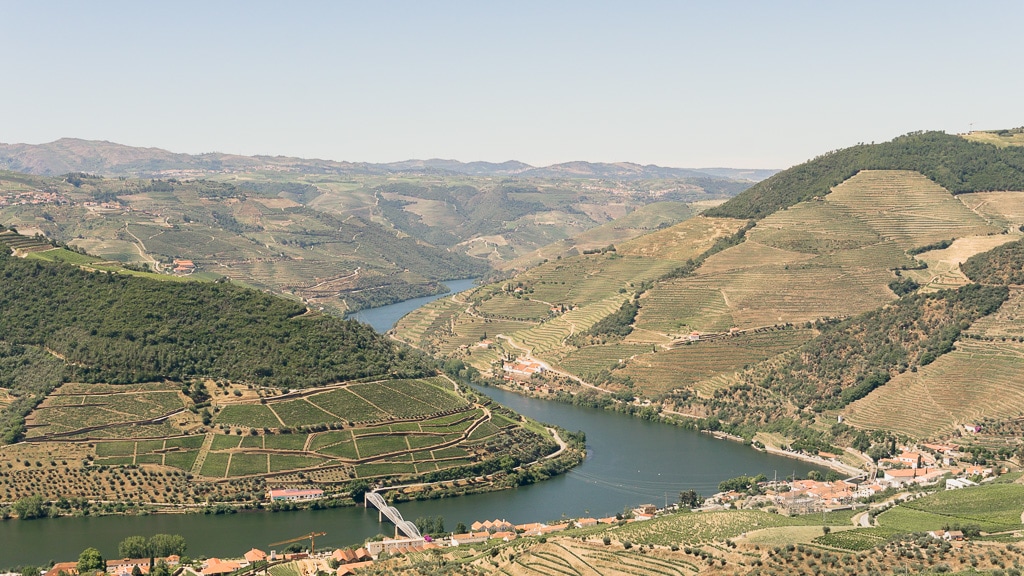
Miradouro Casal de Loivos (Pinhão)
A true postcard of the Douro Wine Region, located 5km from Pinhão. Considered one of the six most beautiful views in the world by the British network BBC, Casal de Loivos is easily accessible and offers stunning views, including the famous “L” that the course of the Douro River forms in front of Pinhão.
Miradouro São Leonardo de Galafura (Régua)
This viewpoint has one of the most beautiful landscapes of the Douro and was eternalized as an “excess of nature” by the Portuguese poet Miguel Torga (1907-1995). It is an obligatory stop, present in any list of the best viewpoints in the Douro, offering from the top of its more than 600 meters a panoramic view of the Douro Valley and the great Serra do Marão.
Miradouro de São Salvador do Mundo (São João da Pesqueira)
At 493 meters high, this viewpoint offers stunning views of the Douro River valley and its tributaries. It houses the largest sanctuary in the Alto Douro Wine Region, a pilgrimage site formed by many chapels built in the 16th century. Legend has it that if an unmarried person ties a knot in the brooms of the Sanctuary of São Salvador do Mundo, they will soon find a good suitor to marry.
Miradouro de Vargelas (São João da Pesqueira)
Also in São João da Pesqueira, the 450 meters high belvedere offers privileged panoramic views of São Salvador do Mundo, Vale de Figueira, São Xisto, Ferradosa, and the magnificent Douro River with its slopes sculpted by men over time. The place was immortalized by the Portuguese writer Francisco Moita Flores in his work “Fúria das Vinhas”: “Whoever climbs to the top of Vargelas will be sure that he has reached the most beautiful point in the sky.”
Miradouro Rota do Douro (Carrazeda de Ansiães)
Located on the winding road that connects Beira Grande to Coleja. The visitor can enjoy a beautiful landscape of vineyards, terraces, riverside villages, and all the majesty of the Douro River, whose curve is framed in the landscape. On the opposite bank, it is possible to see the Quinta de Vargelas and the Vargelas railway station, belonging to the Douro Line.
3. TAKE A CRUISE ON THE DOURO RIVER
Boat trips on the Douro River are among the most popular activities for visitors, including a cruise of a few hours or several days. The tours of at least one full day usually include meals and wine tastings and stops in strategic places to visit the cities and the vineyards. The circular tours that border the river are the most popular for those in Porto looking for a quick trip around the Douro. Known as “Cruzeiro das Pontes,” the visitor pays a fixed price for the day and can hop off and on freely at specific points.
4. TAKE A TRAIN TOUR
If you visit the region between June and October, consider taking a ride on the Historic Douro Train, a steam train from 1915. The route along the Douro River goes from Régua to Tua in a trip that promises a journey back in time and beautiful scenery. Boardings take place only on Saturdays and last about 3 hours (round trip).
5. ART AND CULTURE
The Douro attractions are not only strict to wine tourism. Besides enjoying the beautiful landscape, tourists can visit the local network of museums that, since 2020, have a passport with discounts for visits to the 41 institutions. Among them is the Douro Museum in Peso da Régua, which offers a dive into the region’s history. Other spaces belonging to this network are the Miguel Torga, the Silk and Territory Museum, the Calçada de Alpajares, and the Museu da Memória Real. Also worth a visit is the Côa Valley Archaeological Park, the largest open-air museum in the world located in the Upper Douro.
6. VISIT PRODUCERS BEYOND THE WINE
In the Douro region, you will also find fertile land for centuries-old olive trees such as Madural, Verdeal, Cordovil, and Galega, the main varieties of olives. Almond groves in Portugal also date back to the first villages in the region, giving rise to what is now called the Amêndoa Douro DOP. The Producers Association is in Vila Nova de Foz Côa, but the production area is much more extensive, passing through Moncorvo, Freixo de Espada à Cinta, and Vila Flor, among other towns.
Activities and tours
Book wine tours in the douro
Foods and drinks
What to eat in the Douro
Despite the fame for having great codfish dishes, the cuisine of the Douro Wine Region is very diverse. Among the traditional dishes is Bôla de Lamego, a fluffy pastry with various fish or red meat fillings. The meat comes from Douro cattle or game animals. Among the most appreciated delicacies are roast goatling, stewed wild boar, and Cinfães-style cracklings. For those who prefer fish, trout escabeche is very popular. The desserts take advantage of the region’s fruits, nuts, and almonds, such as Cavacas de Resende, a sweet made with eggs, sugar and baked in a wood oven.
BEST RESTAURANTS IN THE DOURO

The Repentina, in Peso da Régua, is famous for having the best roasted goatling in the Douro, made in a wood-fired oven and served as tradition dictates: with rice and potatoes. When making a reservation, you have to say you want this dish. Another popular restaurant in Régua is Castas e Pratos, with a modern ambiance located in an old warehouse and a wine list containing more than 700 labels. In the same area, those who love tapas can bet on Tasca da Quinta.
On the banks of the Douro River, in Folgosa, is DOC, a restaurant run by award-winning chef Rui Paula. In addition to the Douro-inspired contemporary dishes, the house features a beautiful view of the river.
In Lamego, the Manjar do Douro restaurant blends the best of Portuguese food with signature dishes, as well as a beautiful view of the Nossa Senhora dos Remédios Sanctuary.
In Pinhão, the Cozinha da Clara, at Quinta de La Rosa, features a terrace with a privileged view of the Douro River. Another traditional establishment is Rabelo Restaurant at the Vintage House Douro Hotel, which offers contemporary reinterpretations of traditional dishes.
To finish the list, be sure to visit the Tabua D’aço restaurant, run by Chef Thomas Egger, the first to receive the Green Chef title in Portugal. If you’re looking to stay in the region, check out Casa dos Ruis, a boutique hotel also owned by the Chef, well located and has a strong focus on gastronomy.
Best hotels and accommodation
Where to stay in the Douro
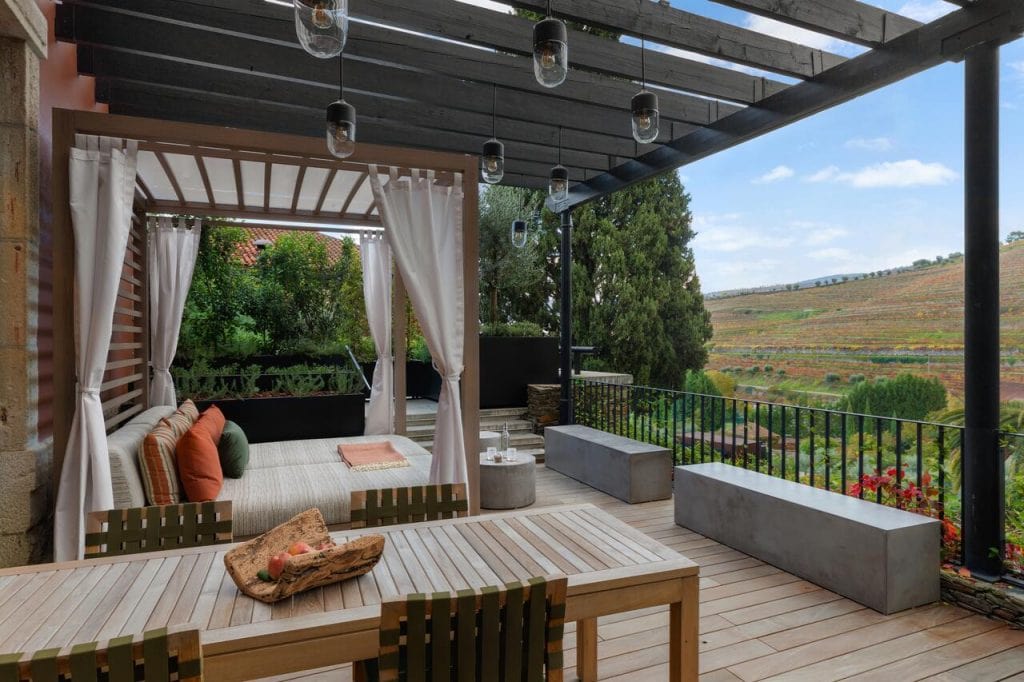
There is no shortage of lodging options if you’re looking for comfort and excellence with incredible experiences, especially linked to wine tourism.
- Quinta da Pacheca (Lamego) 4-star wine hotel that also offers the opportunity to sleep in barrel-shaped rooms;
- Quinta do Vallado (Régua) promotes rural tourism, with hiking trails, fishing, and field tours;
- Monverde Wine Hotel (Amarante) is an awarded wine hotel that offers an eccentric experience of painting with wine;
- Quinta de La Rosa (Pinhão) produces iconic wines such as Vale do Inferno, has one of the oldest vineyards in the world and some of the highest schist walls in the Douro;
- Six Senses Douro Valley (Lamego) offers scenic helicopter flights over the Douro River, canyoning, and rafting.
Discover the Wine-Growing Villages
While traveling through the Douro, how about visiting the Wine Villages? Since 2001, a project to enhance the region’s architectural, gastronomic and cultural heritage has selected six villages that bring a history closely linked to wine. The Wine Villages get livelier in September and October, with the grape harvest. Nevertheless, it is worth visiting and tasting their local specialties at any time of the year.
Favaios: The village in Alijó (Vila Real) is famous for two delicacies – the homemade bread made the old-fashioned way and the Moscatel wine, being the home of Moscatel Galego Branco. So, be sure to enjoy a glass at the Adega Cooperativa de Favaios and learn about the winemaking process, or visit the Bread and Wine Museum. Put on your itinerary the neoclassical Domingos Church, with the highest bell tower in Alijó; the chapels of São Paio (16th century), Santo Antônio (17th century) and Santa Bárbara, on top of the hill, with a panoramic view of the Douro. The view is also breathtaking at the Castro of Vilarelho, 820 meters high, founded in the Iron Age.
Provesende: The trip continues through historic Provesende, in Sabrosa (Vila Real), whose foundation predates the Kingdom of Portugal. The biggest attraction is the Santa Marinha Chapel, built during the final phase of the Roman Empire: it was a pagan temple until the Christian conquest, then it became an Arab mosque until the Christian reconquest, and it even hosted a Benedictine monastery. At an altitude of 809 meters, the Castro de São Domingos and its chapel have a breathtaking view with ruins of schist walls from the Iron Age. Also, be sure to visit the Mother Church and its many emblazoned houses, such as the Casa da Calçada, Casa do Fundo da Vila, and the Casa da Praça, the oldest in Provesende, from 1460.
Barcos: Located in Tabuaço, its history dates back to the Bronze Age. The Mother Church, from the 12th century, is a must-visit national monument. The Santa Maria do Sabroso Sanctuary and the Santa Bárbara Chapel also deserve attention, as well as the wheel of the exposed (roda dos expostos), a mechanism formerly used to leave newborns in the care of charities. Other points of interest are: The Cruzeiro dos Centenários de Barcos, the Largo do Adro Fountain, the ancient Brotherhood Oven (Forno da Confraria), the Old Fountain (Fonte Velha), and the Paços do Concelho. Barcos celebrates its Carnaval in October, which is also close to the Grape Harvest Festival.
Trevões: The village in São João da Pesqueira stands out for its diversity since it does not depend exclusively on wine-growing: there are fruit and vegetable crops, olive oil production, and woodworking, mainly pine and eucalyptus. Among the attractions are the 17th century Chapel of Nossa Senhora da Conceição and the oldest Chapel of the Martyr São Sebastião, from the 16th century. In the 18th century Solar do Paço Episcopal, take a look at the “bishop’s eye,” a spyglass on the south facade that the bishop used to check if the number of faithful was sufficient to celebrate mass. Also, be sure to visit the Trevões Museum and observe the production of handmade shoes, a strong local tradition.
Salzedas: This wine-growing village in Tarouca is home to one of Portugal’s most important monasteries, the historic Monastery of Santa Maria de Salzedas. Among the peoples that formed the local culture are Lusitanians, Romans, Suevi, Visigoths, Muslims, and Jews, whose presence is visible in the Quelho neighborhood. Be sure to visit the Desterro Chapel (17th century), covered with tiles and with a hexagonal shape, the work of the famous architect and painter Nicolau Nasoni, who designed the Clérigos Tower in Porto. It is also worth visiting the Romanesque bridge of Vila Pouca, with a single arch that crosses the Varosa River. And be sure to try the Biscoito de Salzedas, also known as Biscoito da Teixeira, a traditional recipe of the monks, who created another local symbol, the traditional elderberry liqueur (licor de baga de sabugueiro).
Ucanha: Neighbor of Salzedas, Ucanha is also in Tarouca (Viseu) and completes the travel itinerary to the Douro Wine Villages. The main attractions are the fortified bridge, from the 12th century, unique in Portugal, and the toll tower from the 15th century. Don’t miss the São João Evangelista Mother Church, from the 17th century, whose gilded carved pieces contrast with the sober architecture and the ruins of the Old Abbey. Another unmissable attraction is tasting the sparkling wine produced in the region. Combined with the convent sweets on the banks of the Varosa River, it is a divine experience.




